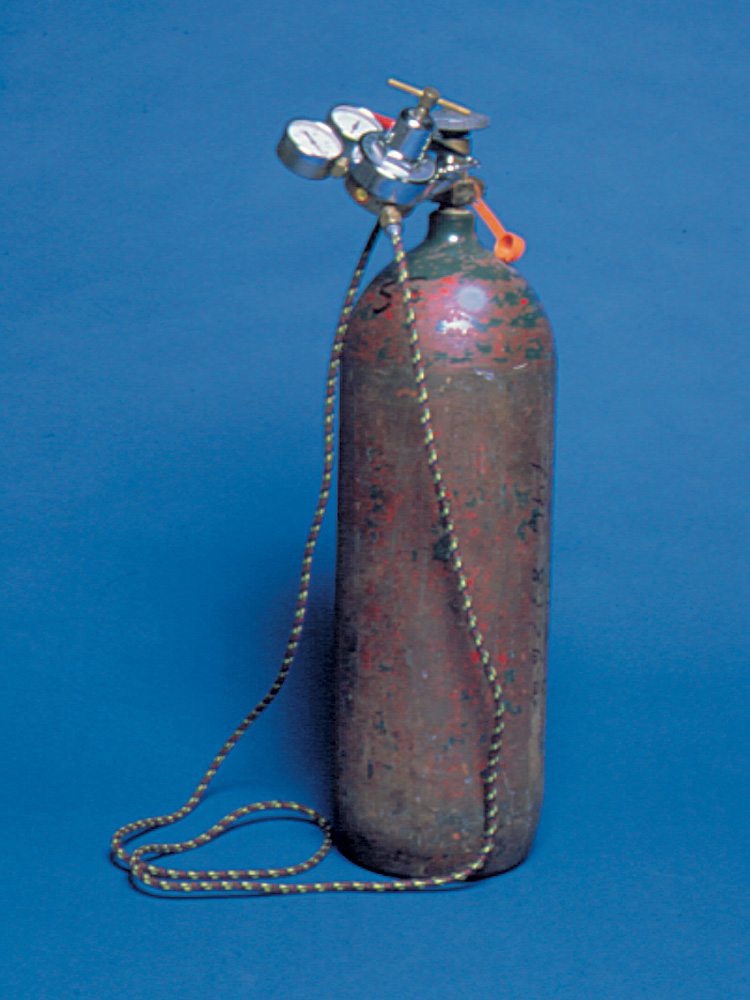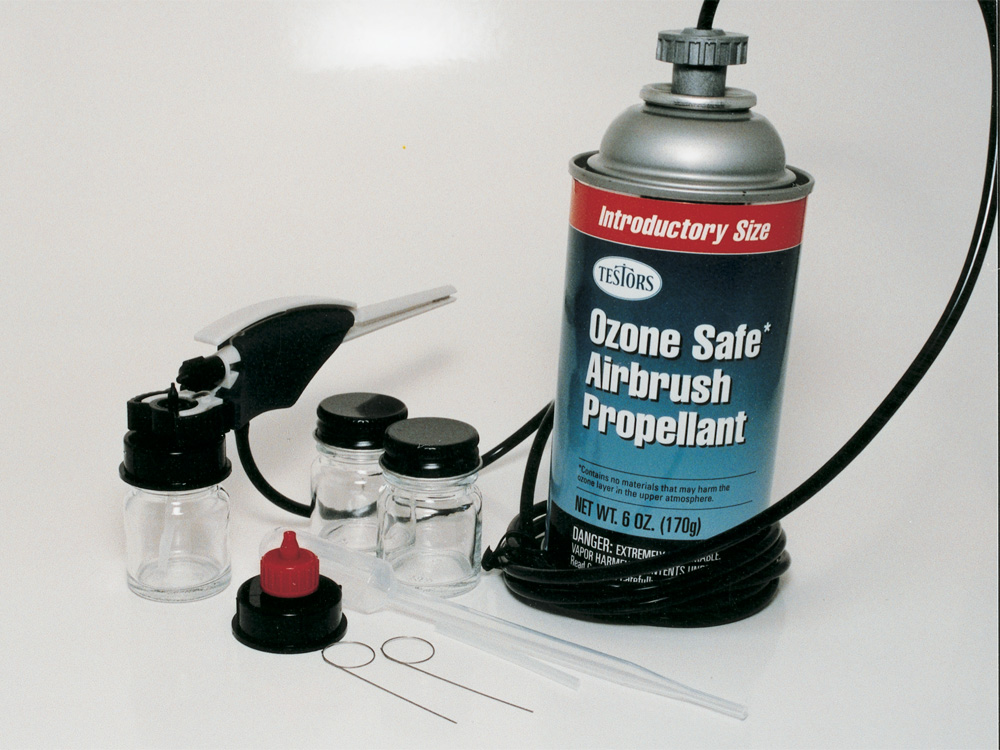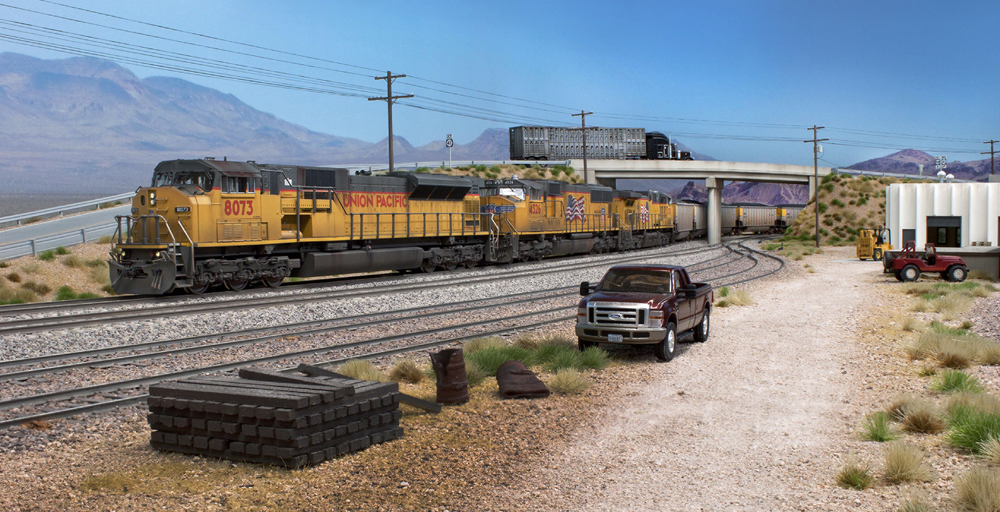
Q: Is using bottled gas as airbrush propellant better than my Paasche air compressor? And what kind of gas should I use: CO2, nitrogen, something else? – Joseph Zawoiski
A: Hi, Joseph. Since you already have an air compressor, I would keep using that. A compressor, equipped with a regulator and a moisture trap, is the best air source for airbrushing. It will provide a steady stream of moisture-free air at the pressure you need and will never run out. The best compressor is the kind with a built-in air tank, because the compressor will only run when the pressure in the tank drops. Not only does this prevent the “pulsing” effect that can result from running an airbrush directly from a compressor, it also spares your ears all that noise. You can get one for less than $200 from Paasche, Tamiya, and others.
That being said, using bottled gas as airbrush propellant is a close second choice. It’s silent, and you can still use a regulator and moisture trap to provide a quality, consistent air stream. You can buy a relatively inexpensive air bottle similar to that used by scuba divers that you can refill with your own compressor or at a service station. So it’s cheap. However, the air will run out eventually, and you’ll get tired of schlepping the heavy bottle back and forth to the recharge point. An alternative is a high-pressure gas bottle. You can get bottles of carbon dioxide gas (CO2) from welder’s supply shops. They will provide clean, moisture-free air, and last a lot longer than an air tank you fill yourself. However, high-pressure tanks are much more expensive than a regular air tank, and getting them refilled is also pricier.

The third option is commercial canned propellant sold by airbrush makers like Testors. We recommend this only for beginners and infrequent hobbyists. The cans run out pretty quickly, so the price adds up fast if you use your airbrush a lot. You also can’t regulate the pressure from a can, so your airbrush’s performance will vary. My first airbrush came with canned air, and its performance almost put me off airbrushes entirely. It wasn’t until I came to Model Railroader and started using the spray booth in our workshop that I realized what I was missing out on. Don’t skimp on the source of air for your airbrush. Its quality is as important as that of your paint or your airbrush itself.
For more on getting the most out of your airbrush, check out our Information Station video PDF download “Weathering with an airbrush,” Aaron Skinner’s DVD “Airbrushing Techniques: Getting Started,” and Jeff Wilson’s book Basic Painting & Weathering for Model Railroaders in the Kalmbach Hobby Store. We also sell airbrushes, paints, and airbrush supplies there.
Send us your questions
Have a question about modeling, operation, or prototype railroads? Send it to us at AskTrains@Trains.com. Be sure to put “Ask MR” in the subject.













